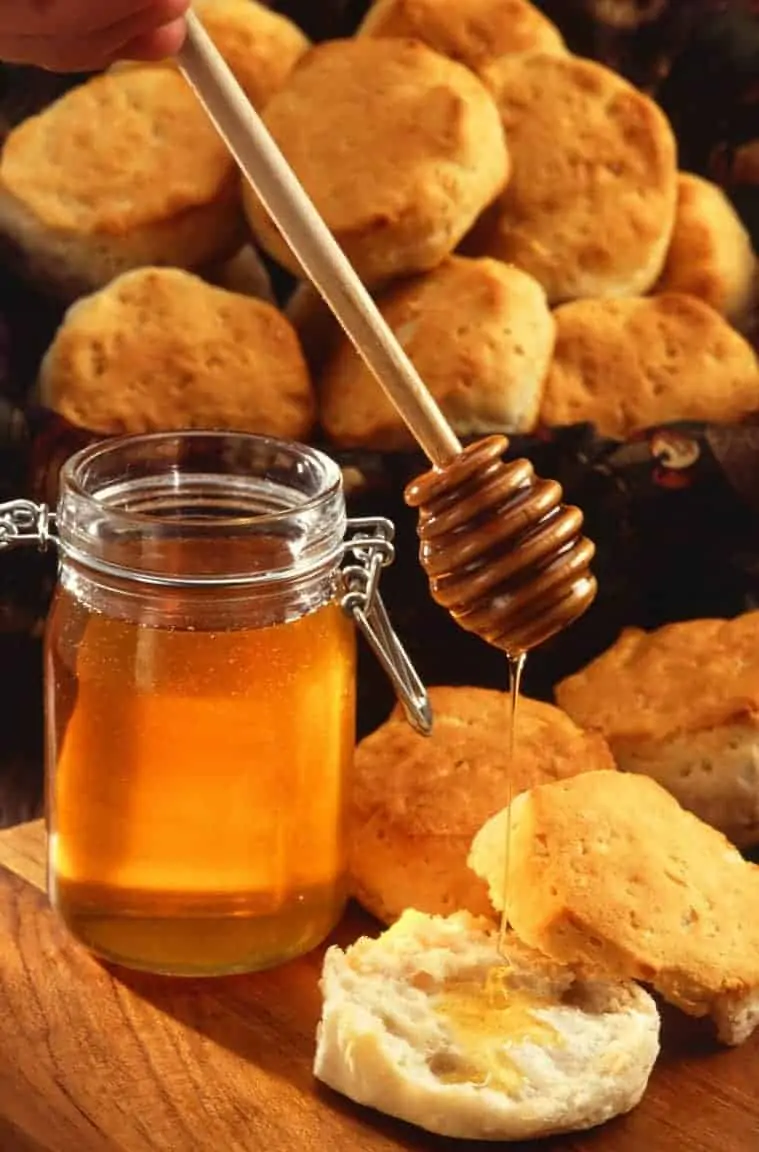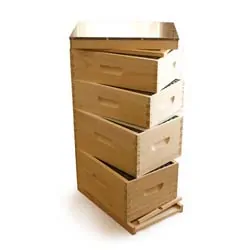Of the many hive rewards, honey is the most commonly known. Its sticky, sweet goodness is a favorite sweetener, but it also provides many health benefits. Local honey contains local pollen and as such is a natural antihistamine. It’s also great for treating burns, bites, and other skin irritations. This fabulous product is hard won. Bees must visit two million flowers to produce one pound of honey and an average worker bee makes only about 1/12 teaspoon of honey in its lifetime.
Depending on your methodology, there are two options for when to harvest honey from your hive. Some beekeepers harvest honey in the fall and provide food for the bees all winter long. However, if you’re like me and subscribe to more natural methods, you’ll wait until spring to harvest honey. This allows the bees to feed on their natural food supply all winter long, leaving us what’s remaining as a reward for being good stewards. For me, this means I’ll harvest as soon as there’s enough forage in the area for bees to sustain themselves.
There are two methods for harvesting honey: spin extraction or crush and strain. Your honey yield per hive will not vary too much, whichever method is used. Which you choose will depend on if you use frames or not, however, even comb built on frames can be carefully cut away from the frame and then be harvested via the crush and strain method.
Spin Extractor
The spin extractor is a mechanical method of harvesting honey used to extract honey from frames. To do this, the caps must be removed, usually with a hot uncapping knife prior to being placed in the extractor.
Extractors come in a variety of sizes and speeds and are available at a wide range of prices. The basic concept with all of extractors is broadly the same. Place the uncapped comb in the extractor, per the manufacturers instructions. The extractor will spin the comb at a high rate of speed – whether through a motorized design or the application of elbow grease – and pull the honey out with centrifugal force.
Crush and Strain
The crush and strain method is a more manual way to extract and is suitable for frameless comb or comb that removed from frames. The basic concept uses gravity to extract honey from the comb. There’s no need to use an uncapping knife. Instead the comb is crushed (hence the first part of the name) with a large potato masher-like tool.

Since I keep my bees in a top bar hive, I used the crush and strain method of extraction. My basic process is in the spring, I collect any comb that’s still full of honey and place it in a cheesecloth bag with an elastic top. That bag is placed in a bucket with several ½” holes in the bottom. That bucket is placed on top of another one with a large hole in the lid corresponding to the holes in the bottom of the first bucket.
The elastic on the cheesecloth bag helps it stay up while I use a long-handled masher to crush the comb. When all the comb is crushed, I place the lid on the bucket to keep the cheesecloth up and flies, etc. out. I walk away and gravity does the rest. In a day or so all the honey has drained. I can put it in jars or other containers and melt down the comb to wax.
Summary
When it comes to the honey harvest, there are two choices beekeepers must make. First, harvest a lot of honey in the fall and feed unnatural products to the bees all winter or wait until spring and take only what’s left. Second, extractor (only if using frames) or crush and strain. Whatever you decide, honey is one of the most well-known and tasty benefits of the hive.

